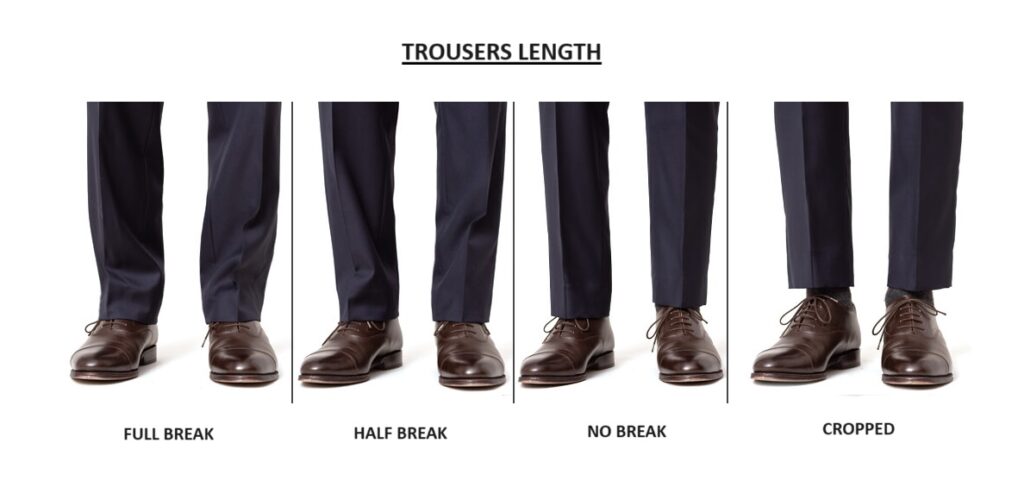Suit Essentials
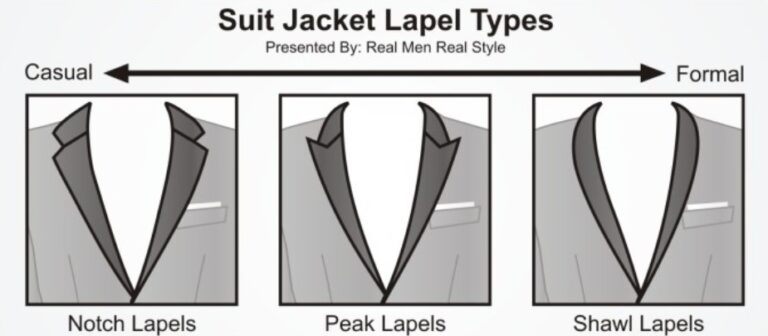
Notch Lapel
- A notched lapel is the most common type of lapel. It is called notched because the two layers of the lapel meeting together form a sideways V-shape, or a ‘notch’. That notch has 75 to 90 degree angle.
- Notched lapels offer the most versatility in styles. They go perfectly well with each kind of coat. If you have a single coat, then go for notched lapels as they are suitable for every occasion.
Peak Lapel
- It is called the peak because the lower half of the lapel has corners that angle upwards towards the shoulders. Those corners form a “peak” on each side of the jacket.
Shawl lapel
- Notched lapels offer the most versatility in styles. They go perfectly well with each kind of coat. If you have a single coat, then go for notched lapels as they are suitable for every occasion.
- Shawl lapel is specifically designed for formal wear and is not appropriate for the corporate environment or everyday wear.
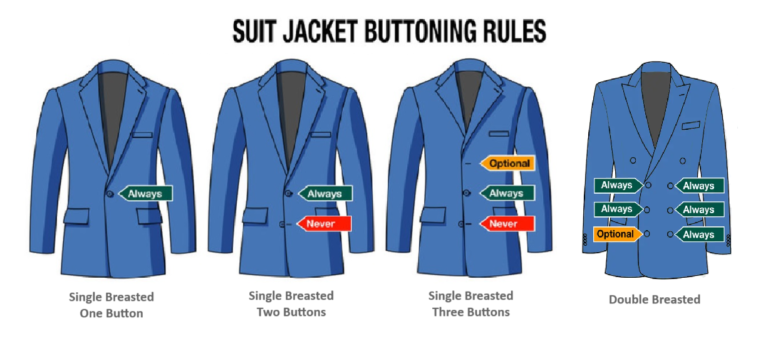
Single Breasted
Single Button Suit
- When standing, you must button the only button.
When sitting, you must unbutton.
Two Button Suit
- Top button must be fastened when standing and 2nd Button should never be fastened.
Jacket must be unbuttoned when seated.
Three Button Suit
- When standing, it is optional to button the top, the middle always, and the bottom never.
- Undo all buttons when seated.
Double Breasted
- By rule of thumb, the functional buttons should always be buttoned until you take the jacket off regardless if you are sitting or standing.
- Double-breasted jackets have two parallel columns for buttons. One column is functional buttons while other is for decorative purpose.
- If you want to sit comfortably, you probably have to undo the bottom button, however, just like with any other double-breasted coat, you never unbutton it completely.
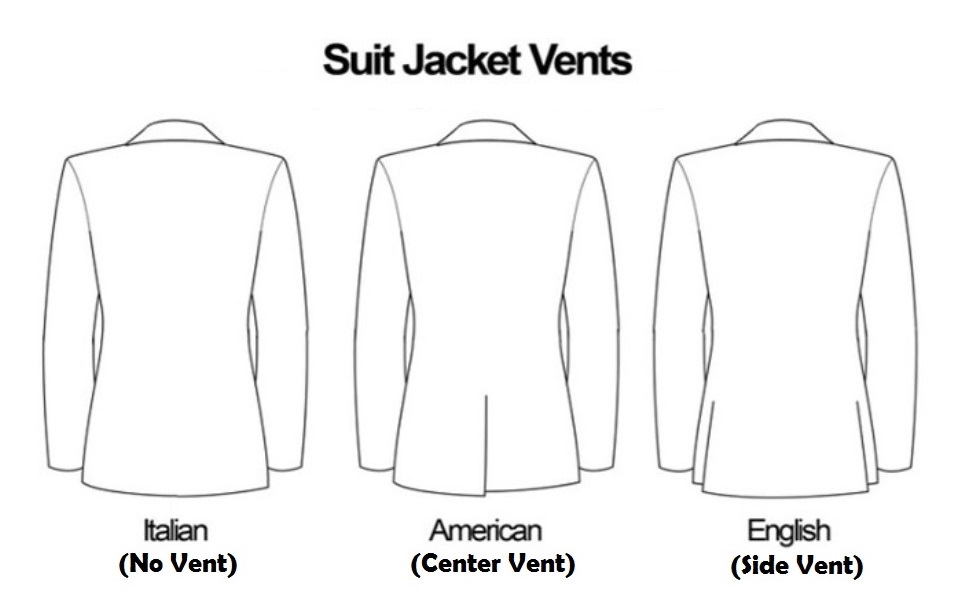
Suit Vents
- Suit vent is a vertical slit that extends upward from the bottom hem on the backside of a suit jacket or blazer.
- Suit vents was made to allow ease of movement and comfort when riding a horse. The separation created by these openings also helped the jacket drape more gracefully over the sides of the rider’s hips, rather than bunching or creasing around the seat.
- Today, their functional purpose remains largely unchanged. Suit vents reduce the feeling of constriction while moving or sitting, prevent the fabric from bunching, and offer smooth access to your pant pockets that don’t mar the lines of the jacket when you go fishing for loose change.
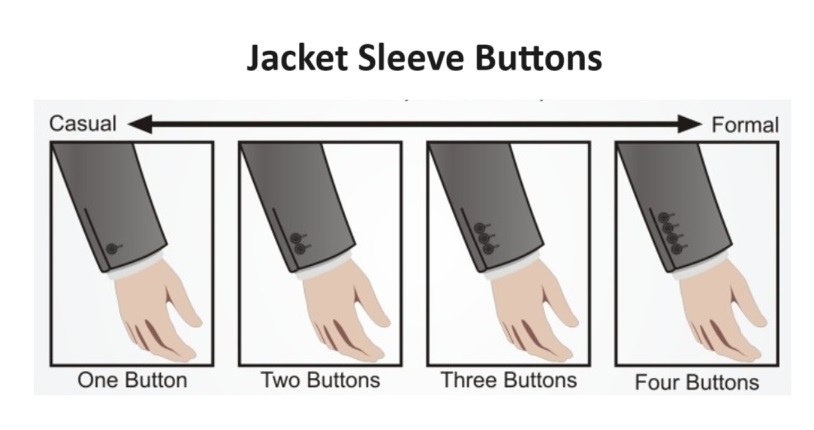
Jacket Sleeve Buttons
- Sleeve buttonholes can be functional/working or for decorative purposes only
- The Fewer buttons, the less formal the suit is. Four buttons is the most formal, while these days, you can see five buttons.

Flap Pockets
- a pocket with a rectangular flap covering the opening, fashioned from the same fabric as the rest of the jacket.
- the most versatile, middle-of-the-road option and will look appropriate in almost any occasion.
- Flaps can be tucked in the pocket itself which then converts it to jetted pocket design.
Jetted pockets
- Pocket with no flap but are otherwise identical to flap pockets. With ultra clean lines and minimal visual bulk, this is inherently the most formal of the suit jacket pocket types.
Patch pockets
- Patch pockets are made from separate pieces of the suit fabric stitched directly onto the outside front of the suit jacket or blazer.
- a patch pocket suit is casual by nature. Patch pockets are appropriate when you’re going for a relaxed and effortless vibe, but should be avoided when formality is required. You’re most likely to spot patch pockets on a sport coat (blazer), or an informal suit.
Ticket pocket
- During the golden age of train travel, ticket pockets became a popular and practical tailoring request. Men making regular trips between the city and the country stored train tickets in this dedicated pocket to avoid fishing through the main pockets when their tickets were required.
- Functionally, the ticket pocket is of little use today, but it shows appreciation for tailoring tradition and makes a fashion statement for the guy who likes a classic touch on his suit.
Straight Pockets
- are a traditional and standard option for your suit jacket pocket, and the Can’t-go-wrong choice if you’re undecided between the two.
Slanted Pockets
- Slanted pockets, also known as hacking pockets, have a rich history rooted in English tailoring and equestrian pursuits. This is because slanted pockets are easier to access while on horseback and more effective at preventing items from falling out since the rider is leaning forward, thus making the slanted pocket opening actually parallel to the ground.
- This is not a concern for most suit-wearing gents in the 21st century, though one advantage of slanted pockets is that it can help shorter or stockier men appear taller and leaner due to the angle, naturally drawing the eye upwards instead of outwards.

